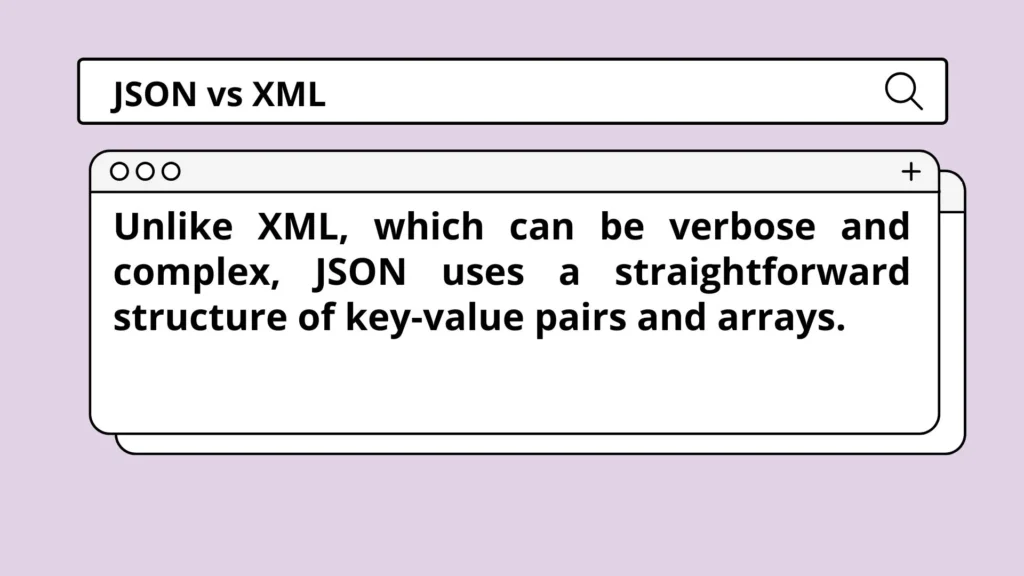JSON VS XML
Learn JSON with examples

In this blog we will look into
JSON Streamlined Syntax outshines XML
One of the key advantages of JSON is its streamlined syntax. Unlike XML, which can be verbose and complex, JSON uses a straightforward structure of key-value pairs and arrays. This concise approach makes it easier for both humans and machines to understand and work with the data. The absence of unnecessary tags and attributes in JSON results in a more compact and efficient data representation. This simplicity not only reduces file sizes but also accelerates parsing and processing times, leading to improved performance in data transmission and storage. Furthermore, JSON’s compatibility with JavaScript makes it an ideal choice for web applications, allowing seamless integration between front-end and back-end systems. Its language-independent nature also enables cross-platform data exchange, fostering interoperability among diverse systems and programming languages. The flexibility of JSON allows for easy modification and extension of data structures without breaking existing code, making it adaptable to evolving project requirements. Additionally, JSON’s widespread adoption has resulted in extensive library support across various programming languages, simplifying implementation and reducing development time for developers working with this format.
Moreover, the hierarchical structure of JSON mirrors the way we naturally think about data, with nested objects and arrays. This intuitive organization enhances readability and makes it simpler to navigate and extract relevant information. In contrast, the rigid and often convoluted structure of XML can make it more challenging to parse and interpret.
Simplicity kicks off to take over the complexity
The simplicity of JSON also translates to faster processing and reduced overhead. Since JSON data is lightweight and requires less parsing, it can be transmitted and processed more efficiently, particularly in scenarios with limited bandwidth or processing power, such as mobile applications or IoT devices. This efficiency extends to server-side operations as well, where JSON’s streamlined structure allows for quicker data manipulation and storage. Moreover, JSON’s compatibility with JavaScript makes it an ideal choice for web applications, enabling seamless integration between front-end and back-end systems. Its flexibility also allows for easy schema evolution, adapting to changing data requirements without breaking existing implementations. As businesses increasingly prioritize real-time data exchange and scalable architectures, JSON’s performance benefits become even more critical. By adopting JSON, organizations can improve response times, reduce server load, and ultimately enhance user experience across various platforms and devices.
As the demand for data-driven applications continues to grow, the advantages of JSON’s readability and simplicity become increasingly compelling. Developers can focus on the substance of the data rather than grappling with complex markup languages, ultimately leading to more streamlined and maintainable code.
In conclusion, the readability and simplicity of JSON make it a superior choice over XML for a wide range of data exchange scenarios. As the technology landscape evolves, the adoption of JSON is poised to continue its upward trajectory, solidifying its position as the go-to data format for modern, efficient, and user-friendly applications.